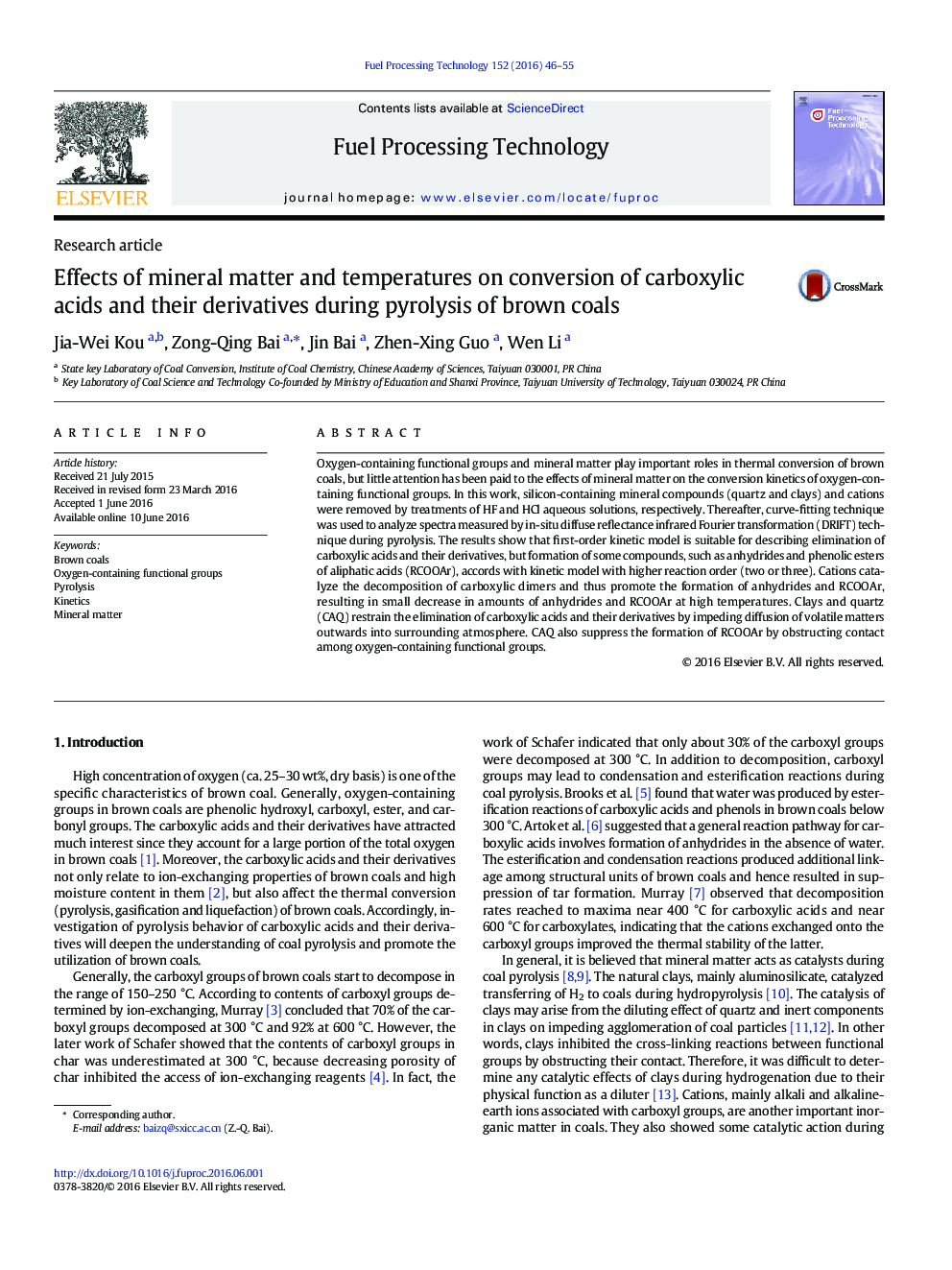| Article ID | Journal | Published Year | Pages | File Type |
|---|---|---|---|---|
| 209064 | Fuel Processing Technology | 2016 | 10 Pages |
•Elimination of most derivatives of carboxylic acids accords with the first-order kinetic model.•Formation of a few derivatives accords with the second or third-order kinetic model.•Elimination of derivatives of carboxylic acids is controlled by their diffusion.•Cations promote the decomposition of COOH dimers.
Oxygen-containing functional groups and mineral matter play important roles in thermal conversion of brown coals, but little attention has been paid to the effects of mineral matter on the conversion kinetics of oxygen-containing functional groups. In this work, silicon-containing mineral compounds (quartz and clays) and cations were removed by treatments of HF and HCl aqueous solutions, respectively. Thereafter, curve-fitting technique was used to analyze spectra measured by in-situ diffuse reflectance infrared Fourier transformation (DRIFT) technique during pyrolysis. The results show that first-order kinetic model is suitable for describing elimination of carboxylic acids and their derivatives, but formation of some compounds, such as anhydrides and phenolic esters of aliphatic acids (RCOOAr), accords with kinetic model with higher reaction order (two or three). Cations catalyze the decomposition of carboxylic dimers and thus promote the formation of anhydrides and RCOOAr, resulting in small decrease in amounts of anhydrides and RCOOAr at high temperatures. Clays and quartz (CAQ) restrain the elimination of carboxylic acids and their derivatives by impeding diffusion of volatile matters outwards into surrounding atmosphere. CAQ also suppress the formation of RCOOAr by obstructing contact among oxygen-containing functional groups.
